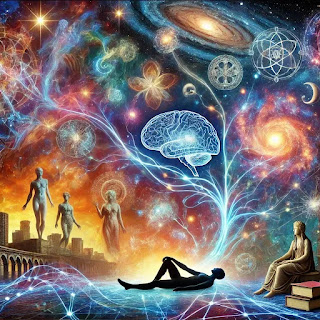'Mood' in Arts & Creative Works!
"Mood" refers to the emotional atmosphere or feeling evoked by a piece of art, event, setting, or situation. In literature, film, music, or any creative work, the mood helps guide the audience's emotional experience. Here's a detailed breakdown of mood:
1. Definition and Purpose
Definition: Mood is the emotional tone or atmosphere that a creator or artist aims to evoke in the audience. It's what the reader, viewer, or listener feels while experiencing the work. Unlike tone—which refers to the creator's attitude—the mood is all about how the audience feels as a result of that work.
Purpose: The mood is designed to immerse the audience emotionally. It sets expectations for the overall experience, preparing them for a specific kind of emotional journey.
2. How Mood is Created
Artists use several tools to create mood in a work, which can include:
Setting: The location, time, and environment in which the story or piece takes place. For example, a dark, abandoned house on a stormy night typically creates a mood of fear or tension.
Tone: Though mood and tone are different, tone helps shape the mood. A sarcastic tone, for instance, might create a humorous or mocking mood.
Imagery and Descriptive Language: Vivid descriptions of landscapes, objects, or weather can evoke specific feelings. Words like "cold," "gloomy," "misty," or "bright" can create mood quickly.
Dialogue: The way characters speak—whether they are cheerful, gloomy, sarcastic, or tense—can also affect the mood.
Color (in film and art): Color palettes have a psychological impact. Warm colors (reds, oranges, yellows) tend to evoke excitement or warmth, while cool colors (blues, purples, greys) evoke calmness or melancholy.
Music and Sound (in film and music): Background music or sound effects can heighten a specific mood. A haunting melody creates a sense of dread, while upbeat music lifts the mood.
3. Types of Mood
Some common moods in various works include:
Happy: Bright settings, cheerful characters, and upbeat dialogue create a mood of happiness or contentment.
Sad: Darker, colder, or more muted settings, with themes of loss or sorrow, create a melancholic or somber mood.
Tense: Suspenseful, fast-paced scenes, often filled with conflict or danger, generate tension or anxiety.
Romantic: Soft lighting, gentle music, and intimate conversations often evoke a romantic or affectionate mood.
Mysterious: Shadows, unanswered questions, and eerie settings often build a mood of mystery or intrigue.
Humorous: Sarcasm, witty dialogue, and absurd situations create a light, comedic mood.
4. Examples of Mood in Literature and Film
"The Raven" by Edgar Allan Poe: The poem’s gloomy, dark language creates a mood of despair and melancholy.
"Pride and Prejudice" by Jane Austen: The mood fluctuates between lightheartedness and tension, especially in scenes with romance or social conflict.
Film Example - "The Dark Knight": The dark visuals, intense action, and the menacing presence of villains like the Joker create a mood of tension and dread.
Film Example - "La La Land": Bright colors, energetic music, and romantic settings create a mood of joy and nostalgia, even though some parts invoke melancholy.
5. The Audience’s Role
While the creator sets up the mood, the audience's personal experiences, feelings, and expectations can influence how they perceive it. For example, a horror movie might evoke fear in one viewer, while another might find it thrilling or exciting. Therefore, mood can be subjective.
6. Contrasts in Mood
Sometimes, creators contrast moods within a single work to surprise the audience or convey complex emotions. A scene might start with a lighthearted mood that turns tragic, or a peaceful setting might suddenly erupt into chaos. These contrasts heighten the emotional experience, making the work more engaging.
Conclusion
Mood is a crucial element that shapes how we engage with art, stories, and experiences. It draws us into the world the creator has designed, making us feel a range of emotions from joy to fear. Understanding mood helps to better appreciate the emotional depth of creative works.






Comments